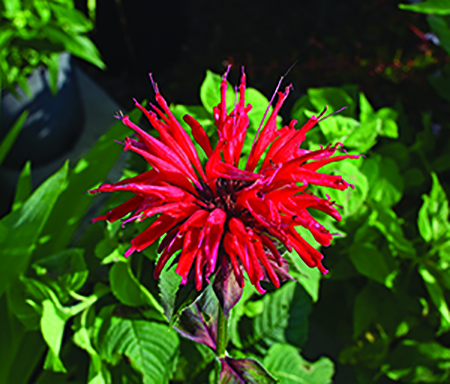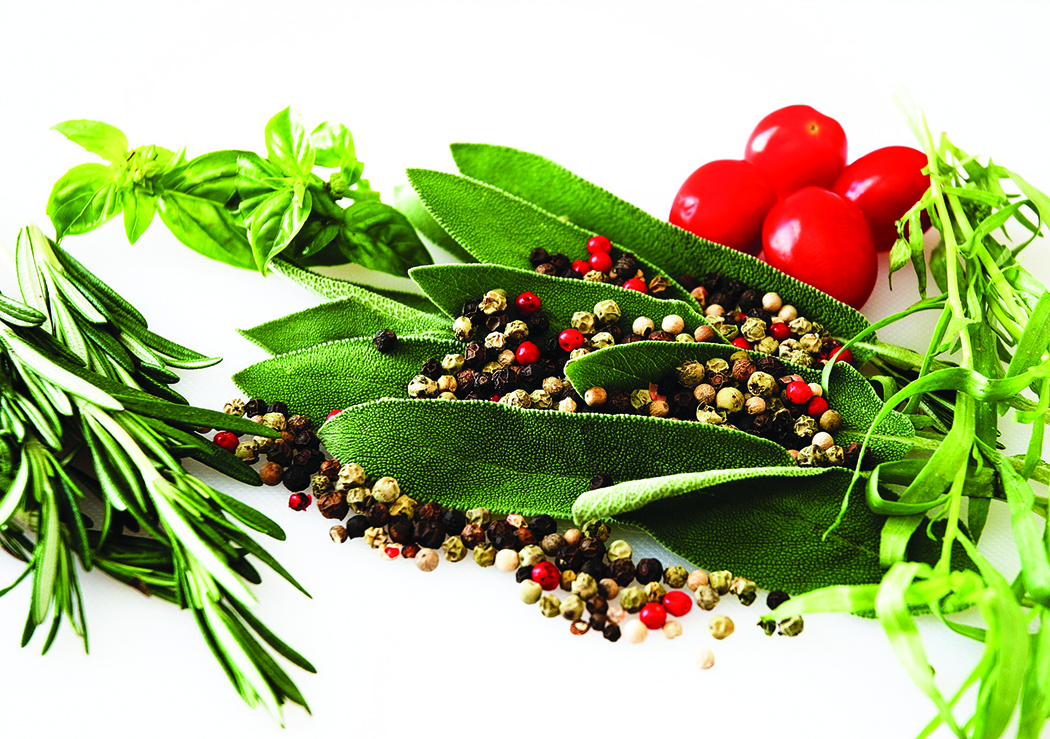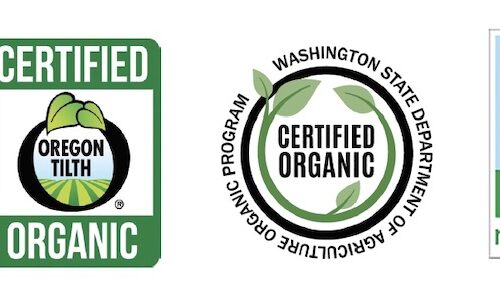As pioneers moved to Washington and Oregon during the 19th century, they homesteaded the land and started a lifestyle that persists even today. There are many stories of pioneer women carrying seeds or a start of their favorite plant carefully wrapped inside a potato. The potato nourished the cutting on the long trip west. There weren’t grocery stores so they grew and processed their own food. They had to be self-sufficient just to survive. 21st century homesteading is still about self-sufficiency — wherever you live. It’s about using less energy, eating wholesome local food, involving your family in the life of the community, and making wise choices that will improve the quality of life for family, community, and the environment. In urban landscapes it may feel challenging to find plants that will be a source of food, flavor, and beauty, and can easily be grown in small yards or even containers on apartment balconies. One group of plants that should definitely be included in an urban homestead are herbs. There are many herbs that can serve double and even triple duty in your landscape.
It is fun to imagine a pioneer woman bringing her favorite herb carefully wrapped and cared for on the long trip west. What herb would she have chosen? Knowing it could be used to add flavor to whatever food they grew, might have to help heal sick family or be used for making household cleaning supplies. And it needed to be easy to grow and preserve. The herbs described below might well have been on her list and will provide an urban homesteader with not just the self-sufficiency the pioneer woman sought but help them keep the environment in mind, too.
Sage (Salvia officinalis)
Known as the “healing herb”, many different varieties: purple, variegated, tri-colored, pineapple, big leaf, and common garden.
GROWING – perennial; 1-2 ft; sun; well-drained soil; flowers attract pollinators; keep trimmed to encourage growth
CULINARY – best with poultry and pork, but rich flavor complements many dishes
HOUSEHOLD – variegated and colored varieties nice in swags & wreaths; some gardeners claim fresh leaves laid about the house deter ants; add to homemade cleaners
COSMETIC – makes good rinse for dark hair and to treat dandruff; teeth cleaner; can make a lotion or rinse that helps soothe acne
HEALTH BENEFITS – make an herbal gargle from vinegar & sage to soothe sore throats; teas for coughs and sore throats, also good as a digestive aid (should not be used during pregnancy); infusion with rosemary and thyme makes a good, soothing mouthwash; oil nice for aromatherapy
Thyme – (Thymus vulgaris)
One of most commonly grown & used in cooking; many different varieties: silver, gold, orange, caraway, lemon, lime.
GROWING – perennial; 2 to 12 in.; sun; well-drained soil; keep trimmed
CULINARY – stuffings, hearty soups, all vegetables, a special affinity for fish, marinades, oils & vinegars
HOUSEHOLD – good in potpourri when wanting spicy as opposed to floral smell; helps repel moths and insects from linens and clothes
COSMETIC – stimulating, toning, and cleansing on skin splash; hair care – infusion good conditioner and essential oil can be added to almond oil as a rinse
HEALTH BENEFITS – contains thymol which is used commercially in cosmetics and medicines; caution because may cause negative reactions; tea can be good for colds and infusion good as a gargle for sore throat; antiseptic and disinfectant properties; can also aid in digestion and ease flatulence; use leaves or essential oil to make massage oil that is good for aches & pains
Bee Balm (Monarda didyma)
Native to North America; great attractant for bees and hummingbirds; main species is a bright red but comes in a variety of colors; keep flowers dead-headed to keep it blooming.

GROWING – perennial; size 2 to 3 feet; sun to partial shade; light, moist soil
CULINARY– makes a great tea and some people find the flowers good in salads; light, citrusy flavor with a hint of spiciness; use in place of oregano or thyme
HOUSEHOLD – dries well so good in potpourri
HEALTH BENEFITS– antimicrobial making it useful for helping aid the body heal from colds, congestion, and sore throats; as a member of the mint family, is good for improving digestive issues
Rosemary (Rosmarinus officinalis)
Known as the herb of remembrance; long history of multiple uses.
GROWING – perennial; size 2 to 6 feet; sun; well-drained soil; somewhat drought tolerant but tender and can freeze in colder areas so good container plant (re-pot every 2-3 years)
CULINARY – roast meats, vinegar and potatoes, stews & soups; strong flavor/taste; can reduce carcinogenic compounds created when charbroiling meat (blackening it)
HOUSEHOLD – potpourri; also good as an insect repellent when combined with other herbs such as southernwood for fleas, catnip for mosquitoes, or lavender for moths
COSMETIC – skin and hair care – good for dry skin and dandruff; makes nice soaps especially exfoliating soaps; rosemary water makes good mouthwash – helps reduce bacteria Herbs for the Urban Homestead continued from page 13 and freshen breath
HEALTH BENEFITS – contains an oil that stimulates the flow of blood to the skin and is used for sore muscles; when used in the bath provides an invigorating and soothing bath for tired bodies
Whether you’re a “pioneering” gardener or an experienced homesteader, we encourage you to have herbs in your landscape. They are easy to grow and maintain; are attractive; good for pollinators; use less water than many yard plants and have lots of handy uses in people’s lives. When you find one you like, we’re pretty sure you’ll find more. As the advertising saying goes “you can’t just have one.”
Erin Harwood & Eloyce O’Connor are co-owners of Garden Delights Herb Farm in Brush Prairie, WA, where they grow a variety of herbs for culinary, medicinal, pet, home, and garden use. They also offer classes. For more info: gardendelightsfarm.com






